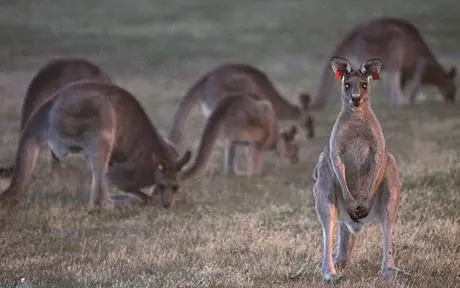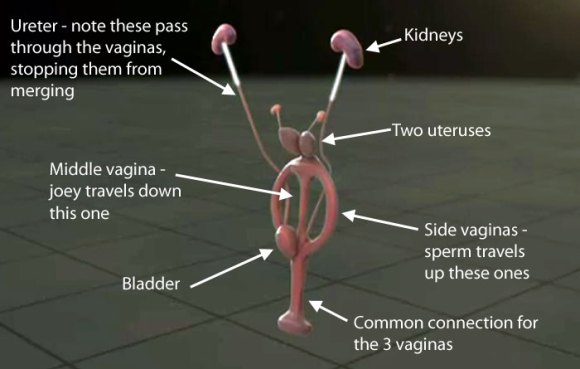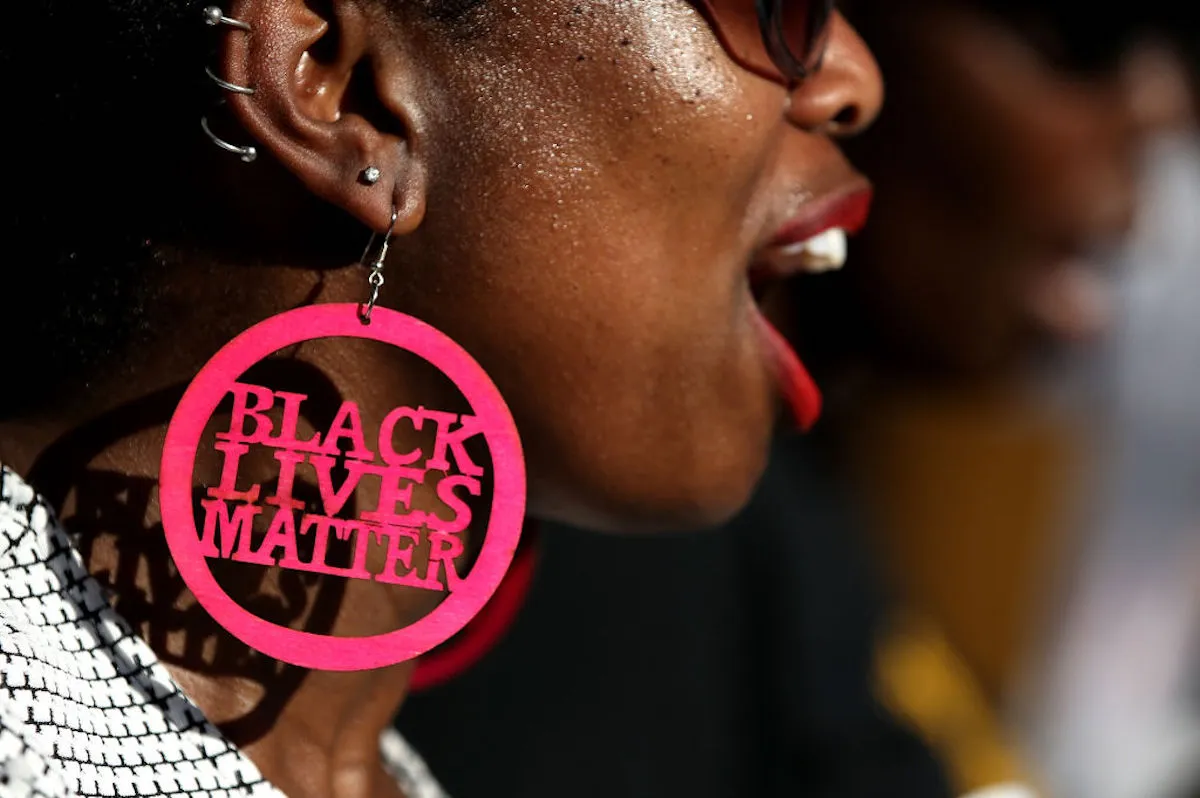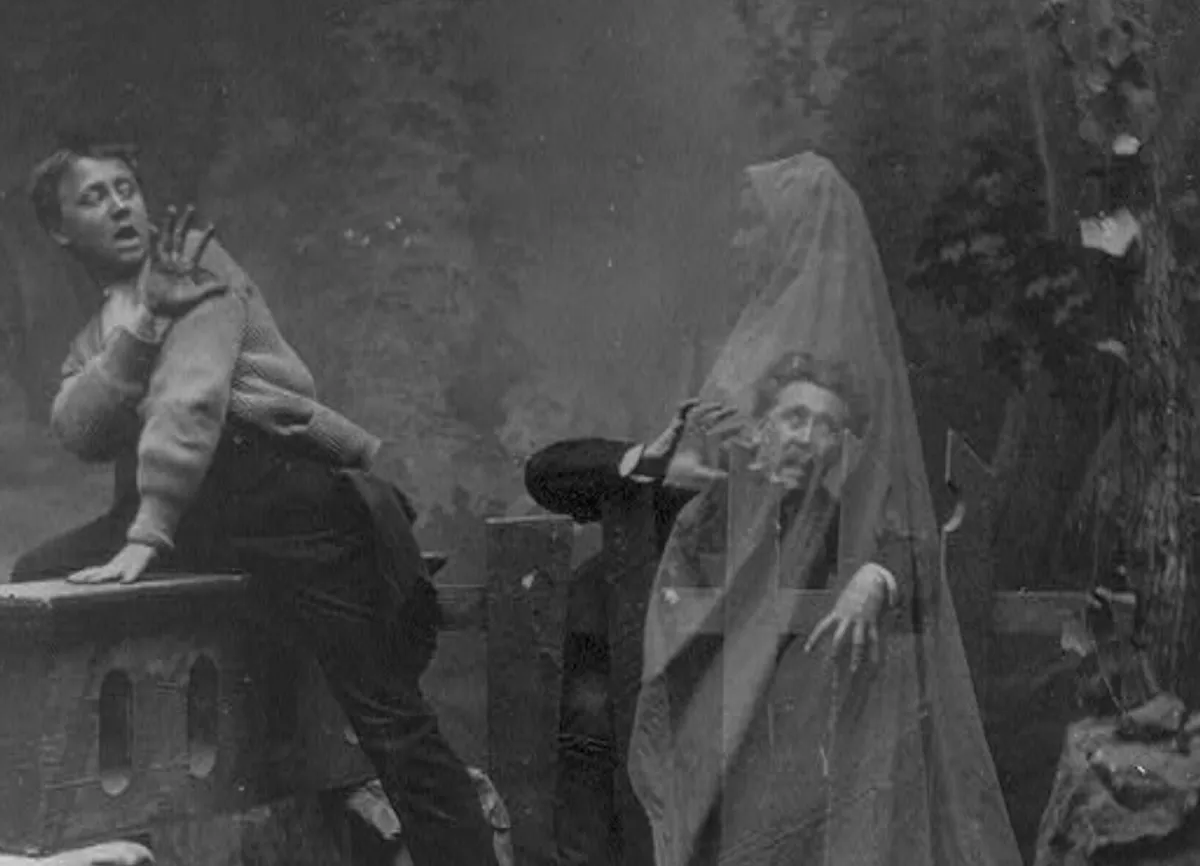What’s that you say? Oh yes, it’s true — marsupials, including the most popular one, the kangaroo, are equipped with a total of three vaginas. Three vaginas, two uteri, all there to serve their own joey-bearing purpose. For one thing, can you imagine their periods, you guys? Crazy! For another, imagine how hilariously scared all those anti-choice lawmakers would be when they got a load of this information if it applied to human vaginas! We’d probably have to stop being women altogether! Because it’s just too many vaginas for people to understand!
The triple marsupial vagina was discussed on the British documentary Inside Nature’s Giants. On that show, anatomists conduct dissections of some of nature’s larger beasts to see how their guts work. In this case, they checked out the ladyguts of kangaroos, for the sheer heck of it. Or because they read something written on the male kangaroos’ bathroom wall and became curious.
What they found was a decidedly more complicated reproductive system than appears in other mammals. It looked something like this:
I’ll bet you’d been hoping for a chart! That’s a screenshot from the documentary, explaining the functions of a marsupial’s three vaginas. The side-vadges are where sperm — from the males’ two-pronged penises — travel up, the middle-vadge is where the baby joey slides down to develop externally in the mother’s pouch after growing to the size of a jellybean in one of her two uteri. Fun fact: Female kangaroos can be “perpetually pregnant” because of how their plumbing works. Because once one joey has left a uterus for the pouch, another embryo can go ahead and start developing internally. So, basically, kangaroos can be pregnant forever. To say nothing of the joeys who have already left the pouch and need to be cared for. Let’s all be glad we’re not kangaroos.
However, let’s be slightly jealous, because the anatomy of a marsupial doesn’t allow for a large fetus to pass through it, and that’s why the joeys are so tiny when they’re “born” (about half an inch long for kangaroos) and start climbing to the pouch, where they grab on to nurse for the next few months of development. No pushing for these mommies.
But again: “perpetually pregnant.” Shudder.
(via Discovery)








